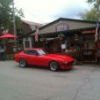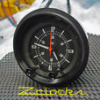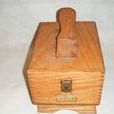Hello
I know it has been a while since my last post, but sometimes other things get in the way of playing with our cars. I did want to close the loop on my post. After many trials and tests we think we have the problem resolved…and IMHO it was not vapor lock, as I originally suspected.
Shortly after my last post, I ran the car on a relatively cool day (mid 60s) and sure enough it died after 40 minutes and would not restart for a while. Given the mild temperature, I began to suspect some other cause, as some of you suggested.
I drove the car to my mechanic’s garage. The drive is about 20 minutes. I got there without problem and left the car running. Within 15 minutes the car died. At that point we disconnected the fuel line at the carb to check the flow. Upon cranking the engine, no fuel was reaching the carb.
We checked and confirmed the fuel line between the pump and carb was clear. So, we installed a new replacement (GMB brand) fuel pump. The car started and ran for 30 minutes or so and died. Again. we disconnected the fuel line at the carb…no gas. At this point we suspected a possible problem between the tank and the pump, so we ran the fuel pump inlet hose directly into a five gallon can of gas. Cranked the engine but no fuel at carb.
I bought a different replacement (US Motor Works brand) fuel pump. Installed it…would not work right out of box. Ran the test with fuel pump inlet hose in can of gas. Cranked engine…no fuel at carb.
We installed a used Kyosan Denki pump…the car ran flawlessly for three hours. So, I acquired a new old stock (NOS) Nikki pump. The engine has been running fine for hours at a time. Totally baffled…could these modern replacement pumps be that bad?
During all these tests where we had the car running for hours, we also discovered a couple intermittent ignition issues…which may, or may not, have contributed to the original problem. Twice while running the car. it suddenly died (no stumbling…just died). A quick check revealed no spart at plugs. The first time this occurred, we had power all the way to distributor. A check of the original cap revealed the center contact was damaged and perhaps causing an intermittent problem. The second time we had no power from the coil. The resistance on the coil tested within specs but since it is a NOS coil, I suspect it might be compromised and failing at operational temperature. All seems to be working fine with new distributor cap and coil.
Thanks for listening and all your help.
Jim












